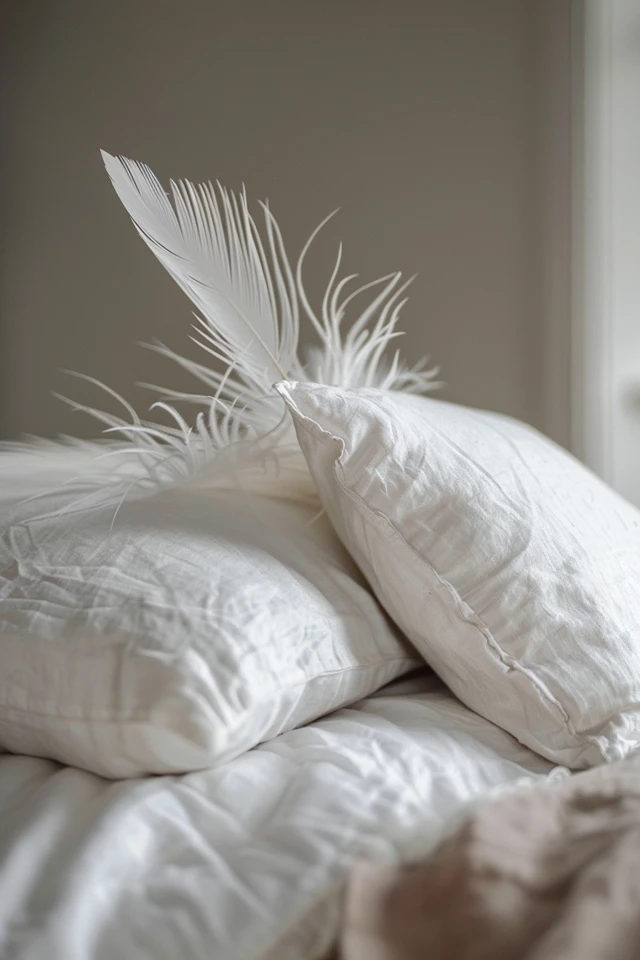Hello there! If you’ve ever come across a beautiful feather and wondered how to properly clean and sanitize it, you’ve come to the right place. Feathers are delicate items that require special care to maintain their beauty and longevity. In this article, I will guide you through the steps to ensure your feathers are sanitized and ready to be showcased or used in various crafts. Let’s dive in!
Key Takeaways:
- Feathers are made of keratin, similar to human nails, and need proper cleaning and care.
- Sanitizing feathers is essential to prevent parasite infestation.
- Be cautious when handling delicate feathers to avoid damaging their structure.
- Proper storage methods help maintain the feathers’ longevity.

Effective Techniques for Sanitizing Feathers
If you find feathers outside, they may carry parasites. To sanitize them and ensure they are safe to use or display, follow these expert-approved feather cleaning tips and techniques:
Inspect the feathers:
Before cleaning, carefully examine the feathers for any signs of damage or pests. If you spot any broken or infested feathers, it’s best to discard them to prevent further contamination.
Prepare a gentle cleaning solution:
Create a solution by mixing lukewarm water and a mild, non-bleach detergent or soap. Avoid using harsh chemicals, as they can damage the delicate structure of the feathers.
Spot clean small areas:
Using a soft, clean cloth or cotton swab dipped in the cleaning solution, gently dab and clean any areas with visible dirt or stains. Take care not to saturate the feathers as excessive moisture can lead to damage.
Wipe down the entire feather:
Using the same gentle cleaning solution and a soft cloth, carefully wipe down the entire feather, following the natural direction of the feather’s barbs. This helps remove any remaining dirt or debris from the feather’s surface.
Rinse with clean water:
After cleaning, rinse the feather under running lukewarm water to remove any soap residue. Gently shake off excess water and pat dry with a clean towel.
Allow the feathers to air dry:
Place the feathers on a clean towel or a drying rack in a well-ventilated area. Avoid direct sunlight or heat sources, as they can cause the feathers to become brittle.
Fluff the feathers:
Once dry, gently fluff the feathers by running your fingers through them. This helps restore their natural shape and gives them a fuller, more voluminous appearance.
Store properly:
Once sanitized and dry, store the feathers in a clean, dry container or a sealed bag to protect them from dust and pests.
By following these feather cleaning techniques, you can ensure that your feathers are clean, sanitized, and ready to be used or displayed in your desired projects or decor.

Proper Storage of Feathers
When it comes to delicate items like feathers, proper storage is essential to preserve their beauty and prevent damage. Whether you have a collection of delicate feathers or simply a few treasured pieces, following these storage methods will ensure their longevity.
Firstly, it’s important to clean delicate items before storing them. To clean feathers, gently remove any dust or debris using a soft brush or a hairdryer on the coolest setting. Avoid using water or any cleaning solutions as they can damage the feathers.
Next, find a suitable storage container for your delicate feathers. Ideally, use a clean and dry archival-quality box made of acid-free materials to prevent yellowing and deterioration over time. Line the box with acid-free tissue paper or unbleached muslin fabric to create a soft and protective cushion for the feathers.
Finally, arrange the feathers in the storage container with care. Use acid-free tissue paper to separate individual feathers or delicate pieces from each other to prevent tangling or friction damage. Ensure that the feathers are not compressed or folded tightly, as this can cause permanent creases.
By following these storage methods, you can safeguard your delicate feathers and enjoy their beauty for years to come. Remember, clean delicate items are less prone to damage, and proper storage is the key to preserving their delicate nature. Take the time to sanitize delicate items and implement these delicate item cleaning methods to maintain the pristine quality of your feather collection.


